Classic Salmon and Trout Flies
of Europe and the Americas |
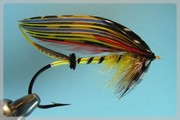 |
The techniques shown below ones I've devised through years of reading and trial and error. They in no way represent all the ways of tying an American wet fly, though I believe they represent some good methods, and they are ones that work for me. But there are other approaches certainly, and the more ways of doing something that one has at his disposal, the better. I've tried to keep my methods in a traditional vain, and my American wet flies don't deviate significantly from ones that were tied in the middle third of the 20th century.
Lay down a thread base, taking it to just short of where the bend starts. Using both hands, slide the tag tinsel up against the far side of the hook, between the thread and the hook shank. If you want gold ribbing, put the gold side against the hook, if silver, silver side against the hook. Wind the thread forward five turns to secure the tinsel. I got this method of attaching tinsel and floss from Don Bastian, and liked it so much I changed the way I attached them right then and there. The beauty of this is that the tinsel is pulled down to the bottom of the hook when wound. If you attach at the bottom to start it can ride up as you wind, and your tag and ribbing won't appear to magically come from nowhere, which is the desired effect.
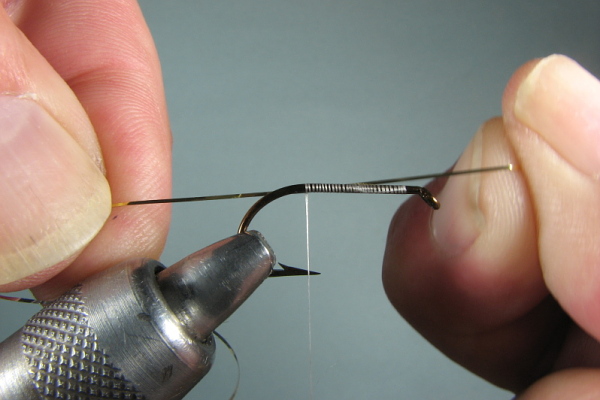
Gently pull tinsel to the rear, to cut down on waste.
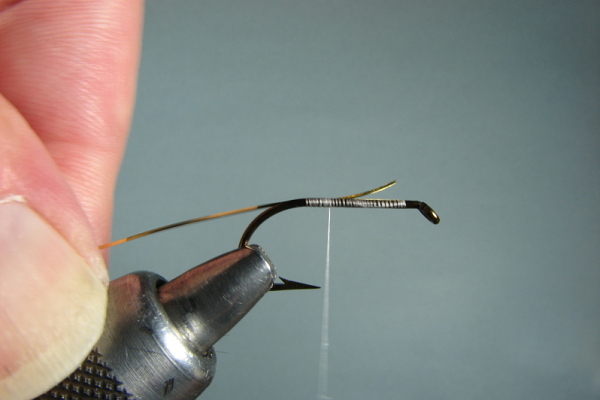
Wind the tinsel back five turns, and then forward five turns, keeping the ones coming forward right on top of the previous ones. This is difficult to do, and I now use magnification when I do this.
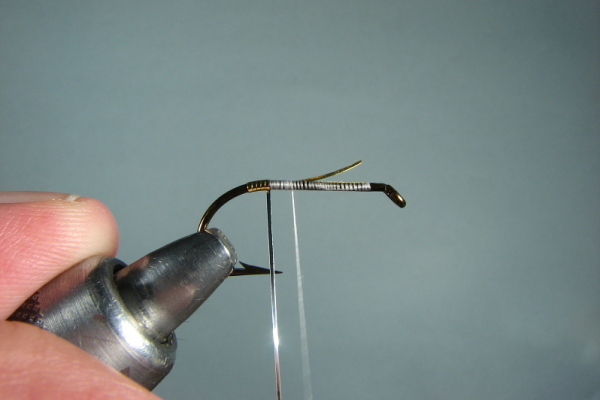
Now unwind the thread five turns, then catch both ends of tinsel with one or two wraps forward. Secure with more wraps and trim.
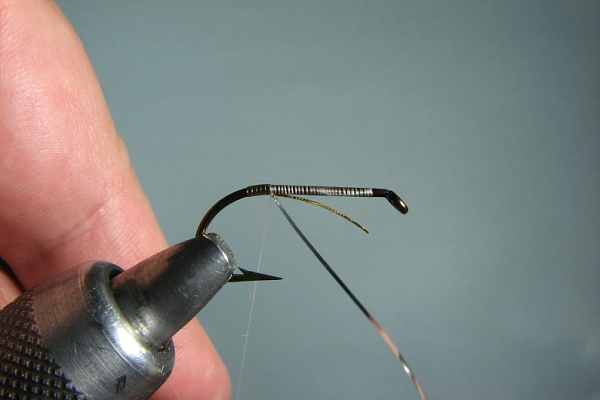
Here I've filled in the body with thread wraps as necessary, trying to even things up.
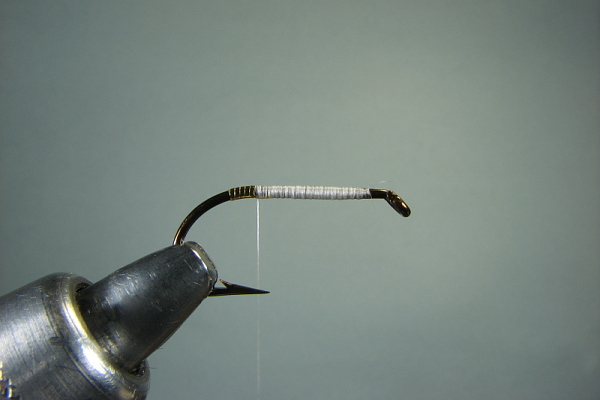
Marry a left and right tail section, using goose secondaries rather than the customary duck quill slips. They will marry more easily to the wood duck. Now attach the tail. Again, use thread wraps the length of the body to try to build a taper. I like to use the tail butt material to help with this, trimming it appropriately.
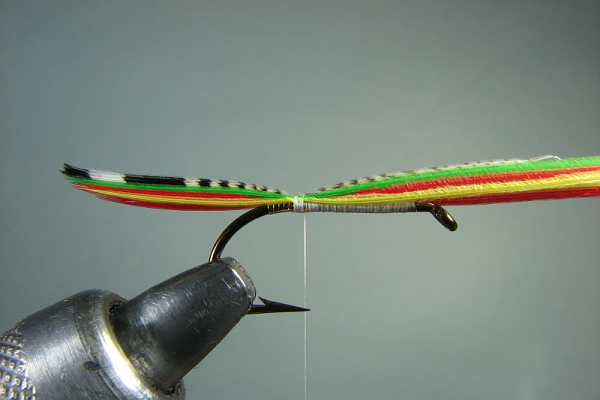
Attach the palmered hackle on the near side of the hook. I like to use cock hackle for this. I got the idea from the old salmon fly dressers, and Alice Conba, wet fly dresser from Ireland uses cock hackle for this as well. Try to select a hackle with a good taper, and tie in so the longest part is just short of the hook when it's tied in. Secure with just ONE wrap.
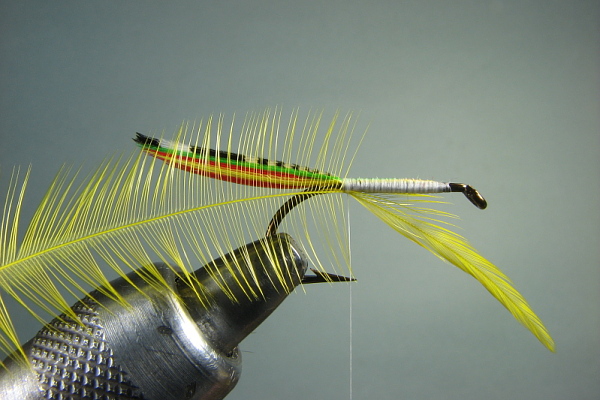
Attach a nice long piece of ribbing tinsel just as you did the tag tinsel. Secure with one wrap. You want it long so that it can be wound around your vise to get it out of the way.
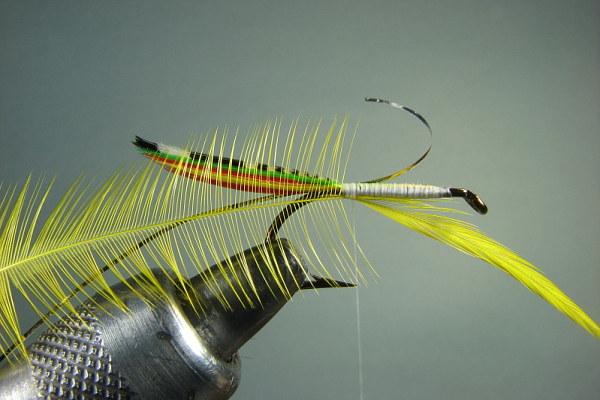
Attach two strands of Danville's red floss to the far side of the hook, just as you did the tinsel. Now trim ends and wrap thread forward to where you first tied on to the hook.
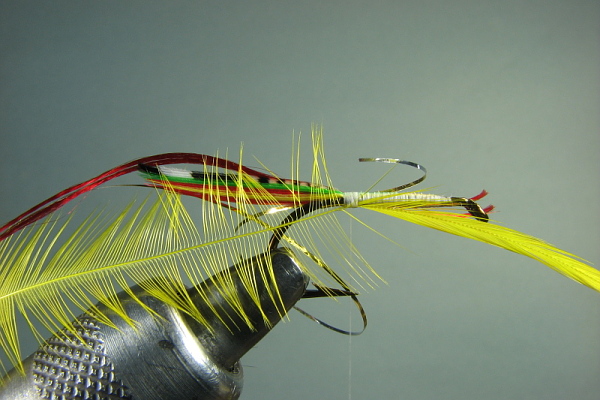
Before winding the floss, start by stroking the floss pair repeatedly, to even up the strands and remove any broken ones. Let them slide through your thumb and middle finger. Now wind both forward at once, over-winding previous winds with one half of the width of the floss you're winding. Secure at the front by winding the thread over the floss, then in front of it, then over it again. You may also use half hitches if you wish.
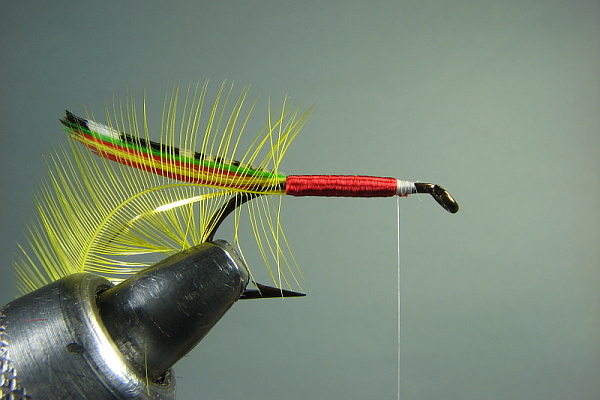
Wind the ribbing, five perfectly spaced turns. Though it's not a hard and fast rule, five turns is traditional, and all turns must be in the same plane, at about a 45 degree angle. Tie the ribbing off on the SIDE of the hook, and secure as you did the floss. Again, I must give credit to Don Bastian for this idea. The beauty of this is the tinsel will not get in the way of mounting the wing if it's tied off on the side. This is especially useful with metal tinsel.
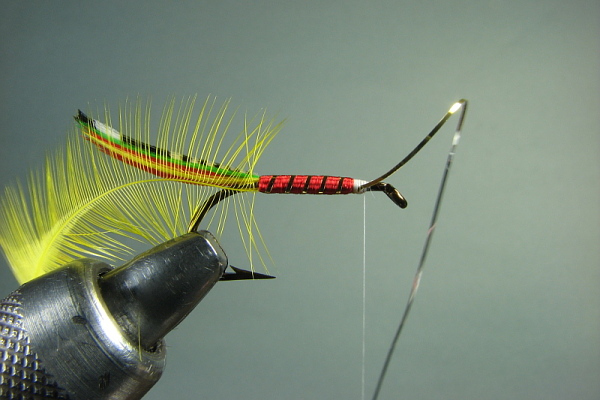
Wind the palmered hackle exactly along the trailing edge of the ribbing. Be careful, this hackle breaks easily as you wind. Let it slip through your fingers as you go, at the same time forcing the barbs to the rear. It helps to have an extra hand to do all this. If you're tying a fly with just palmered hackle, try to do exactly five perfectly spaced winds, as if ribbing is there. Secure the hackle well and trim.
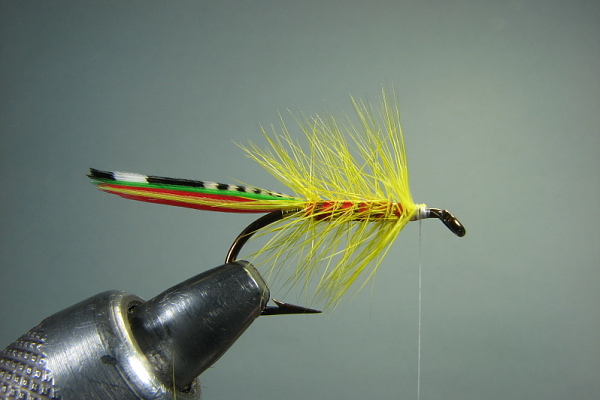
Now take a properly sized throat hen hackle and tie it in just in front of the palmered hackle by the tip (wet fly style). Wind three or four closely spaced wraps. Secure this well, binding butts down with several winds, and trim. Then pluck the hackle sticking out of the top of the shank with tweezers, making room for the wing.
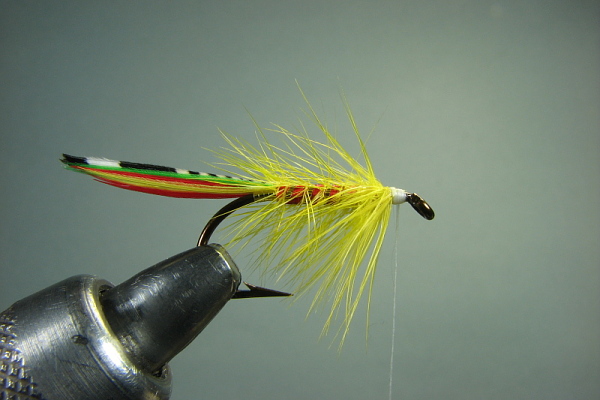
Build two wings, marrying the fibers, one for the side close to you and one for the far side. These two sides will be put together to form one wing, which will be mounted all at once. Use left slips for the near wing on this fly, and right slips for the far wing, which is opposite what you would do if you were using mallard slips and making a "tips together" wing. This particular wing is unique in that it has wood duck in it. For wings like this I use goose secondaries rather than mallard for the other slips, as the mallard has tons of reverse curve in the wing, and the goose and wood duck do not. Goose secondaries will marry much more easily to the wood duck. For almost all other wings, mallard, duck quills, or goose primaries are preferred. Switch to black thread, make a base, and mount the wing.
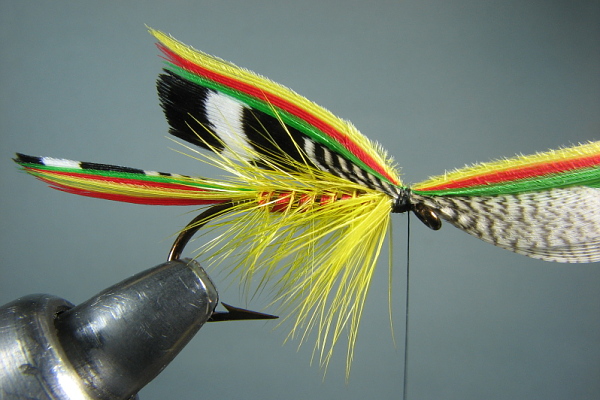
Trim the wing butts and finish the head.
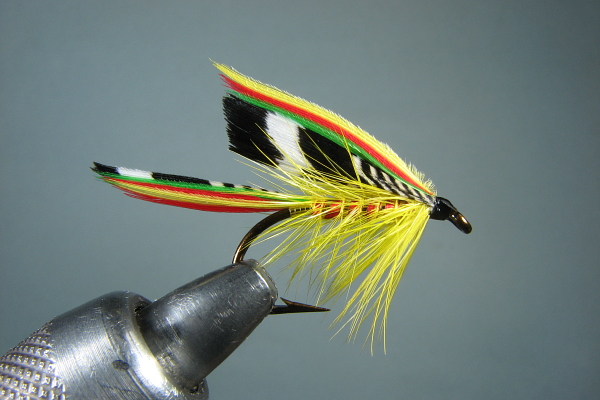
Here's the finished Cassard.
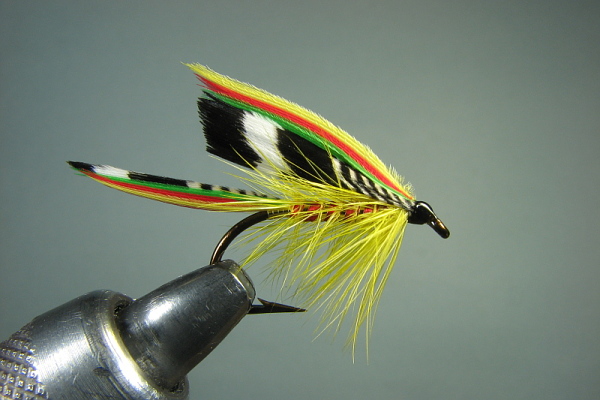
Hook: Mustad 3399 #6
Tag: Gold tinsel
Tail: Scarlet, yellow, insect green, barred mandarin
Ribbing: Gold tinsel
Hackle: Yellow palmered
Body: Red floss
Wing: In order: scarlet, yellow, insect green, barred mandarin
NOTE: Ray Bergman's order of colors in the tail and wing do not agree with those shown in Mary Orvis Marbury's "Favorite Flies". Not only that, the fly he shows does not agree with his own recipe. So with the one I've done I've stayed faithful to Mary Orvis Marbury, and she knew Cassard personally. The order should be, I believe, yellow, scarlet, insect green and barred mandarin, from top to bottom on the wing, and from bottom to top on the tail.
Background image from "Trout" by Bergman (1938)